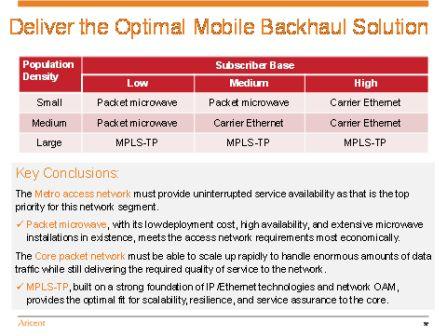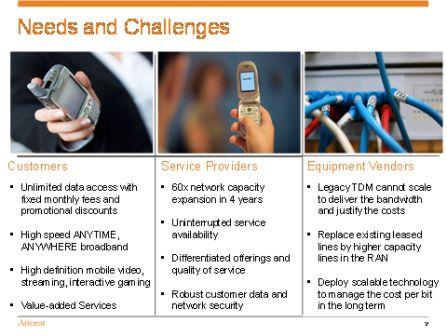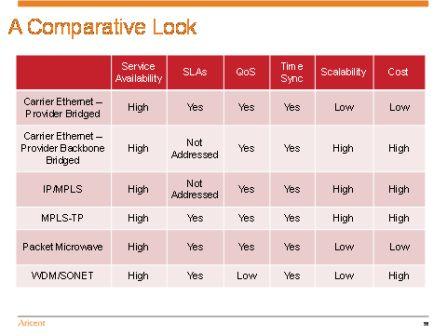 The insatiable demand for network bandwidth by today's smart phone and tablet users is driving mobile telecom operators to increasingly deploy IP-based backhaul networks. It has been estimated that by 2016, backhaul costs will quadruple to $257 billion to accommodate the demand.
The insatiable demand for network bandwidth by today's smart phone and tablet users is driving mobile telecom operators to increasingly deploy IP-based backhaul networks. It has been estimated that by 2016, backhaul costs will quadruple to $257 billion to accommodate the demand.
As a result, deploying efficient and effective backhaul solutions has emerged as a major (if not the top) priority for mobile service providers as they migrate from voice-optimized TDM 2G and 3G to data-centric 4G. However, finding the optimal solution — more capacity and better performance at lower cost — is a significant challenge. It is made more acute by projections that mobile revenue declines will drop so far as to merely allow most operators to just meet their capex and opex requirements by 2014.
The reason for attention on backhaul is simple. It represents one of the major cost components of providing service. Rajesh Kumar Sundararajan, Assistant Vice President for Data Communication products and Rajkumar Paulraj Technology Director for Data Communication products at Aricent (News - Alert) Group, a leading provider of IP-based broadband backhaul solutions, during a recent TMCnet hosted webinar, “Delivering the ‘Optimal Mobile Backhaul’ Experience,” looked at the challenges facing mobile providers, and scenarios for how they can gracefully migrate to meet surging traffic requirements and do so cost effectively and in a timely manner.
Background: needs and feeds
Aricent presented a fine summary of the needs and challenges facing various parts of the mobile ecosystem in the chart below:

However, migrating today's networks, that implement multiple technologies (Ethernet, SDH/SONET, DSL, Microwave, and traditional E1/T1), to a high performance packet backhaul architecture is increasingly complex. Further, successfully delivering TDM-like performance on end-to-end IP-based backhaul networks presents a new set of challenges. Reality is one size does not fit all. This is a matter of trade offs as well as a classic case of the old axiom, “where you stand depends on where you sat.” In fact, Aricent presented an instructive comparison on this point.

In looking at all of these challenges and trade-offs, Aricent has evolved its ISS solution to become a platform of choice for delivering high performance backhaul solutions that span the variety of possible service provider scenarios.
What is the optimal backhaul solution for your network?
While still a function in many ways of where a network operator is migrating from —taking into account not just existing technology concerns but also ones regarding geography (location and topography), population density, funding, existing relationships for backhaul (own and operate or lease), etc. —Aricent has drawn important conclusions from its experience deploying its ISS solution.
What is right for you? Reviewing all of the details of the webinar, especially listening to the Q&A that followed the formal presentations is a recommended way to start down the path of finding a backhaul solution that is optimal for your network.
Peter Bernstein is a technology industry veteran, having worked in multiple capacities with several of the industry's biggest brands, including Avaya, Alcatel-Lucent (News  - Alert), Telcordia, HP, Siemens, Nortel, France Telecom, and others, and having served on the Advisory Boards of 15 technology startups. To read more of Peter's work, please visit his columnist page.
- Alert), Telcordia, HP, Siemens, Nortel, France Telecom, and others, and having served on the Advisory Boards of 15 technology startups. To read more of Peter's work, please visit his columnist page.
Edited by Rich Steeves